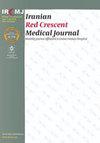Lessons from Flood Disaster Management of Khuzestan Province, Iran, Based on the Experiences of Policymakers: A Qualitative Study
IF 0.2
4区 医学
引用次数: 0
Abstract
Background: Floods are among the most destructive crises in various countries, including Iran, and are considered a national issue. To reduce flood damages, the flood management process must be regularly reviewed and its problems be identified. Objectives: Therefore, the present study aimed to focus on flood management in April 2019 in Khuzestan province, Iran, to investigate the flood disaster management in Iran based on the experiences of policymakers, identify problems, improve the process of flood disaster management, and reduce damage in the future. Methods: This study was designed based on qualitative content analysis. Data was collected using one-on-one, semi-structured interviews with open-ended questions. According to the targeted sampling method, six policymakers related to the Khuzestan flood disaster management in April 2019 were selected as interviewees. Interviews continued until data saturation. Results: After data analysis, three main themes were identified, namely 1) actions before the flood disaster, such as provision of infrastructure and public awareness, 2) actions during the flood disaster, such as flood disaster level assessment and coordination of actions, and 3) actions after the flood disaster, such as damage assessment. It should be mentioned that each theme included sub-themes and categories. Conclusion: Increased effectiveness of disaster management requires integration and centralization of disaster management and coordination between organizations involved in the disaster at all stages of disaster management, including before, during, and after the disaster. It is also necessary to pay attention to research and successful models and implement preparedness programs along with disaster drills to prevent disaster damage. Engagement of the participation of people should be considered as well.基于决策者经验的伊朗胡齐斯坦省洪水灾害管理教训:定性研究
背景:洪水是包括伊朗在内的各国最具破坏性的危机之一,被视为国家问题。为了减少洪水造成的损失,必须定期审查洪水管理程序并找出其中存在的问题。 目标:因此,本研究旨在关注伊朗胡齐斯坦省 2019 年 4 月的洪水管理情况,根据决策者的经验调查伊朗的洪水灾害管理情况,找出问题,改进洪水灾害管理过程,减少未来的损失。 研究方法:本研究采用定性内容分析法。采用一对一、半结构化访谈和开放式问题的方式收集数据。根据有针对性的抽样方法,选取了六位与 2019 年 4 月胡齐斯坦省洪水灾害管理相关的政策制定者作为受访者。访谈一直持续到数据饱和为止。 结果:经过数据分析,确定了三大主题,即:1)洪水灾害前的行动,如提供基础设施和提高公众意识;2)洪水灾害期间的行动,如洪水灾害等级评估和行动协调;3)洪水灾害后的行动,如损失评估。值得一提的是,每个主题都包括子主题和类别。 结论要提高灾害管理的有效性,就必须在灾害管理的各个阶段(包括灾前、灾中和灾后)实现灾害管理的一体化和集中化,以及参与灾害管理的各组织之间的协调。还必须重视研究和成功模式,在实施备灾计划的同时开展灾害演习,以防止灾害造成损失。还应该考虑让人们参与进来。
本文章由计算机程序翻译,如有差异,请以英文原文为准。
求助全文
约1分钟内获得全文
求助全文
来源期刊

Iranian Red Crescent Medical Journal
医学-医学:内科
自引率
0.00%
发文量
0
期刊介绍:
The IRANIAN RED CRESCENT MEDICAL JOURNAL is an international, English language, peer-reviewed journal dealing with general Medicine and Surgery, Disaster Medicine and Health Policy. It is an official Journal of the Iranian Hospital Dubai and is published monthly. The Iranian Red Crescent Medical Journal aims at publishing the high quality materials, both clinical and scientific, on all aspects of Medicine and Surgery
 求助内容:
求助内容: 应助结果提醒方式:
应助结果提醒方式:


